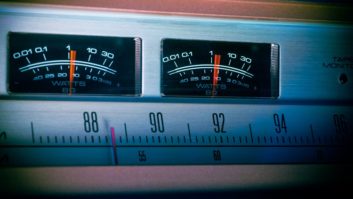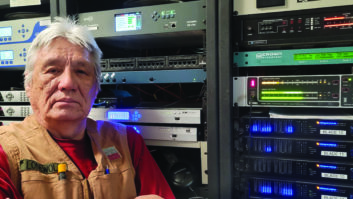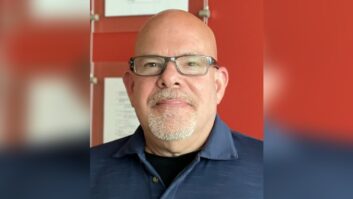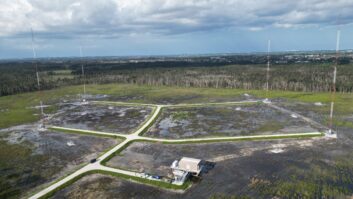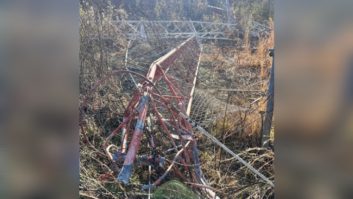
Credit: iStockphoto/Robin OlimbFM translators have been much in the news in recent years and play an increasingly important part of the multiplatform strategies of many media entities.
This is the first in a series.
An FM translator is just a mini-radio station, correct?
Well, yes and no.
To the radio listener, an FM translator is an FM radio station, although with less coverage than might be expected from a full-service FM station.
To an FM translator licensee, however, FM translators are different than full-service FM stations, as they carry greater risks to continuing operations. FM translators are regulated under a wholly different FCC rule section (Part 74) than full-service FM stations (Part 73).
Translator Series
This first in a four-part series explores basic FCC regulatory aspects of FM translator stations. Part 2 will approach FM translators from the perspective of an FM translator licensee and, in particular, the licensee of an in-contour fill-in FM translator station carrying either an AM station or an HD sub-channel. Part 3 looks at challenges AM licensees may face in acquiring an FM translator, either in the marketplace or in the proposed AM-only FCC FM translator filing window. Part 4 considers issues that full-service stations may have with possible interference from FM translators.
REGULATION
In considering the FCC regulatory aspects of FM translator stations, there is the perspective of the FM translator licensee itself (which may or may not also be the licensee of the primary station carried by the FM translator), the particular perspective of an AM broadcaster that would like to acquire an FM translator, and finally the perspective of a full-service FM station that may have its signal impacted by an FM translator.
The most significant regulatory difference between FM translators and full-service FM stations is that, under the current FCC rules, FM translators are secondary services. An FM translator station can continue to exist only if there is no cognizable interference to bona fide listeners of existing stations. This secondary status of an FM translator currently applies whether the translator is carrying a distant station or providing fill-in service for an AM station or HD sub-channel.
FM translators may not, with limited exceptions, originate programming. Rather, the programming carried on an FM translator must be concurrently broadcast over a full-service FM or AM station that is known as the primary station.
One exception is that programming produced by an AM station daytime-only station may be carried during nighttime hours when the AM daytime-only station is off the air. Another exception is that an FM translator may carry no more than 30 seconds of locally originated support acknowledgements each hour.
An FM translator may be commercial or non-commercial, a status determined by the commercial or non-commercial status of the primary station carried.
FILL-IN OR NOT
There are two types of FM translators: fill-in FM translators that have the service contour completely contained within the service contour of the primary FM or AM station, and non-fill-in FM translators that extend the service contour of the primary FM station (non-fill-in FM translators may not carry AM stations).

This photo shows equipment typically used at a fill-in FM translator site. From top to bottom: Belar FM Modulation Monitor; Bext Model LEX 100 FM Transmitter; Marti Model SR 20 Studio Transmitter Link Receiver; PTEK Model FM150ES FM Transmitter
Photo by Gary Cavell A non-fill-in commercial FM translator cannot be owned by a commercial broadcaster under the FCC’s rules because it would extend service outside of the service contour of the primary station carried. The service contour is the 60 dBμ contour for all FM stations except for Class B and B1 stations for which the service contours are the 54 dBμ and 57 dBμ contours respectively. The relevant contour for AM stations is the 2 mV/m contour.
In the past five years or so, with the FCC now allowing AMs and HD sub-channels to be carried as primary stations, most FM translator activity has been with fill-in translators. A non-fill-in FM translator cannot be owned by, or have any connection with, the licensee of the primary station.
The most significant technical distinction between a fill-in and a non-fill-in FM translator is the power and height limitations on non-fill-in translators. For a non-fill-in FM translator located east of the Mississippi River or in Zone 1, maximum effective power can be limited under FCC rules to as low as 10 watts with antenna heights of 141 meters HAAT and above.
Conversely, a fill-in translator does not have antenna height/power limitations. This lack of height/power limitations for fill-in translators results in many FM translators having significant coverage areas with antenna heights above average terrain in the hundreds or thousands of feet. For fill-in FM translators, the maximum effective radiated power can be 250 watts with no antenna height limitation.
Until several years ago when the FCC changed its rules and policies to allow FM translators to re-broadcast AM stations and HD sub-channels, fill-in FM translators were primarily used in more rugged terrain to enhance coverage to signal-shadowed areas. Now, the use of FM translators to enhance AM reception and provide HD sub-channel reception capability on non-HD radios is flourishing.
FM translator ownership is not subject to the FCC’s full-service station numerical ownership limitations. Therefore, full-service broadcasters with full market complements of AM and FM stations may acquire as many fill-in FM translators as they may find, to re-broadcast as many HD sub-channels as may be available, whether or not owned by the licensee.
THE BENEFITS
Finally, it is worth noting that an FM translator offers an aspiring broadcaster a low-cost, low-regulatory-obligation way of delivering diverse programming to a small or medium market audience.
I have suggested to more than one aspiring broadcaster the possibility of acquiring an FM translator combined with the lease of an HD sub-channel serving as the primary station. While full-service FM stations command multi-million dollar prices in most markets, FM translators still are often traded for five figures. Pairing an FM translator with a leased HD sub-channel creates a new radio station that, while not having the vast coverage of a full-service station, is a credible entryway into broadcasting.
In Part 2, we will approach FM translators from the perspective of an FM translator licensee and in particular, the licensee of an in-contour fill-in FM translator station carrying either an AM station, or an HD sub-channel.
John F. Garziglia is a veteran radio and television attorney offering assistance in all areas of Federal Communications Commission law in the Washington, D.C., offices of Womble Carlyle. For other publications, see listings at www.linkedin.com/in/johngarziglia.






